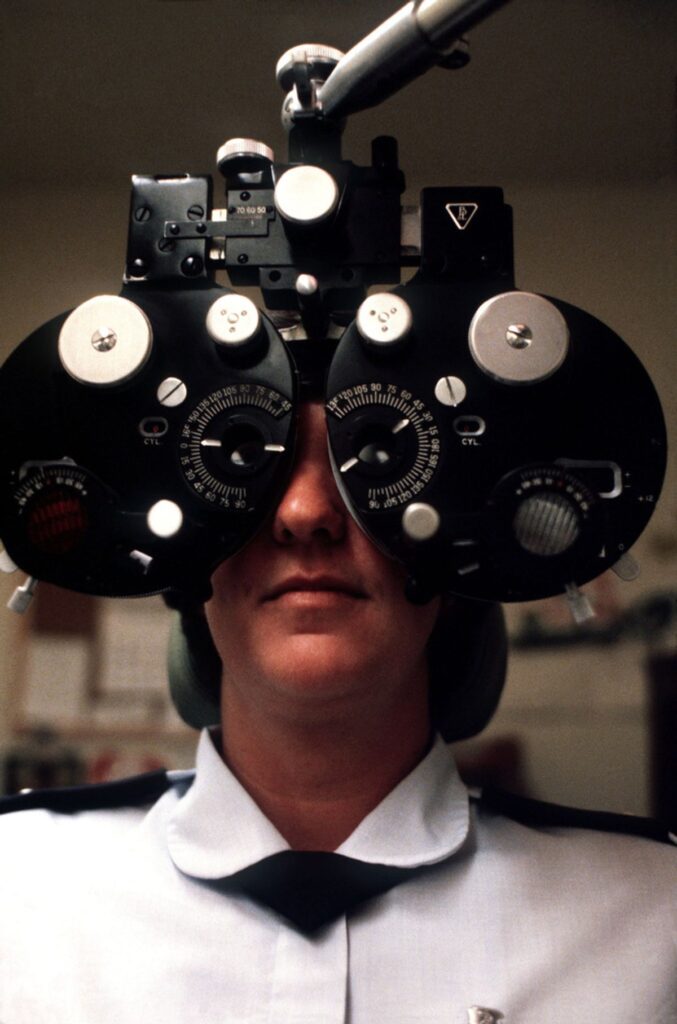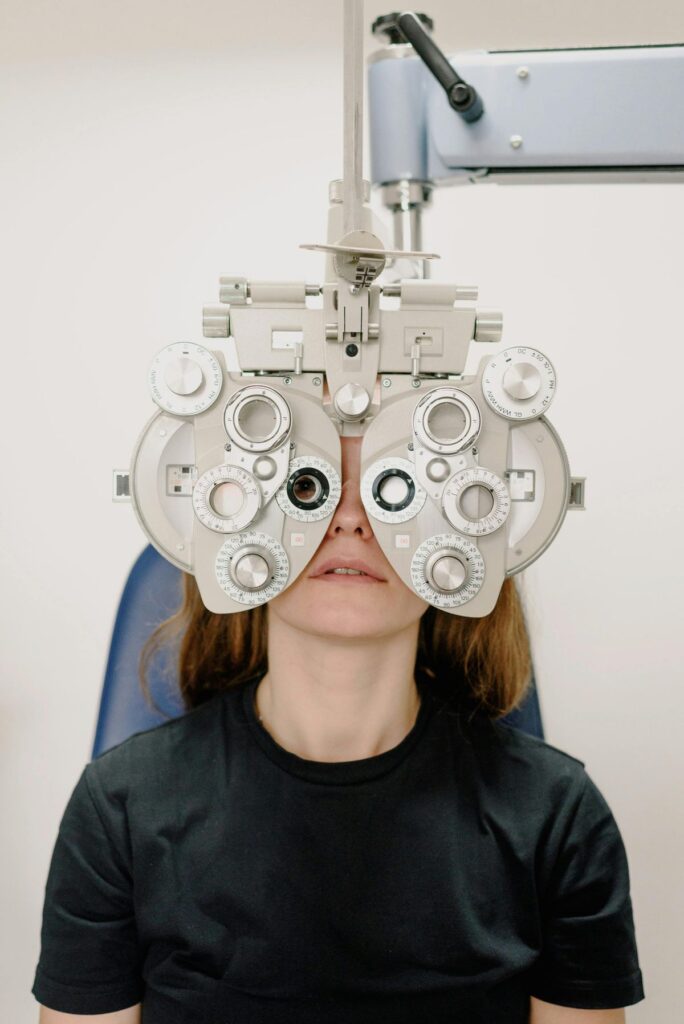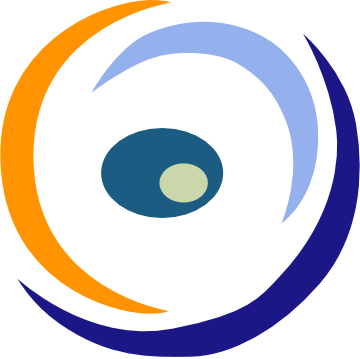The landscape of eyewear is undergoing a significant transformation as cutting-edge prescription tools and innovative lens technologies emerge. These advancements promise to enhance our visual experience, integrating seamlessly with smart devices and offering personalized vision solutions. This article explores the latest developments that are revolutionizing the way we think about and use eyeglasses, from adaptive prescriptions to fashion-forward tech accessories.
Key Takeaways
- Emerging technologies allow for eyeglass prescriptions that adapt to daily vision changes, potentially eliminating the need for multifocals and improving vision comfort throughout the day.
- Smart glasses are being designed with prescription compatibility, enabling users to experience the latest advancements without compromising on vision correction needs.
- New research in optical vortices could lead to prescription eyeglasses that provide clear vision across multiple distances without distortion, challenging traditional lens designs.
- The evolution of eyewear has transitioned from a necessity for vision correction to a fashion and technology statement, with a focus on blending style, functionality, and innovative features.
- Professional eye care consultation remains crucial despite advances in technology, ensuring that individuals receive personalized treatment plans and correctly fitted frames and lenses.
The Future of Eyeglass Prescriptions

Adapting to Daily Vision Changes
The dynamic nature of our vision necessitates eyeglasses that can adapt to varying visual demands throughout the day. Innovations in eyeglass prescriptions now aim to accommodate daily fluctuations in vision, providing wearers with optimal sight from morning to night.
- Morning: Fresh eyes, minimal adjustments needed.
- Afternoon: Eye fatigue may set in; slight prescription enhancement.
- Evening: Low light conditions; increased prescription strength.
The goal is to ensure that individuals experience consistent clarity, regardless of the time of day or the specific visual task at hand.
This approach to vision correction is not only about responding to the natural changes that occur with our eyesight but also about preempting the challenges that arise from our modern lifestyles, such as prolonged screen time leading to computer vision syndrome. By tailoring prescriptions to these daily patterns, eyewear can become a more effective tool in maintaining not just visual acuity but overall eye health.
Seamless Integration with Smart Glasses
The advent of smart glasses has brought about a paradigm shift in how we perceive and interact with the world around us. Smart glasses are not just a step forward in wearable technology; they are a leap towards an integrated digital experience. With features like augmented reality (AR) overlays, users can access a wealth of information without the need to look away from their surroundings.
Smart glasses offer a variety of control interfaces, from touchpad swipes to voice commands, allowing for a hands-free and intuitive user experience. The importance of this integration cannot be overstated, as it provides a level of convenience and accessibility that is unprecedented in the realm of eyewear.
The seamless integration of smart glasses with our daily lives is set to redefine the boundaries of personalized technology and visual enhancement.
Compatibility with mobile and operating systems is crucial for a frictionless experience. Whether you’re an Android enthusiast or an Apple devotee, the ability to connect your smart glasses to your devices is essential for a truly integrated experience. Below is a list of key considerations for ensuring your smart glasses work harmoniously with your existing technology:
- Check for mobile and operating system compatibility
- Look for smart glasses that offer stable Bluetooth connectivity
- Ensure the glasses support AR and other advanced features
- Consider the ease of controlling and communicating with the glasses
Customizing Prescriptions for Enhanced Experience
The evolution of eyeglasses is not just about the frames but also about the precision and adaptability of the lenses. Customizing prescriptions has become a cornerstone for enhanced visual experiences, allowing wearers to enjoy clarity and comfort tailored to their unique needs. Eyewear SaaS platforms are at the forefront of this revolution, offering features like personalized recommendations and virtual try-on options.
The integration of prescription compatibility in smart glasses ensures that the latest in eyewear technology is accessible to everyone. Whether for single-vision or progressive needs, users can now have their specific prescriptions seamlessly integrated into their tech-enabled frames.
Prescription accuracy is vital to prevent eye strain and discomfort. Regular eye exams and high-quality eyewear are essential for maintaining optimal vision health. As the industry moves forward, we may see prescriptions that account for daily fluctuations in vision, providing a truly customized experience that adapts to our lives.
Innovative Lens Technologies
Spiral Lens Design for Clarity Across Distances
The introduction of the spiral lens design marks a significant advancement in eyeglasses prescription tools. The spiral diopter’s unique structure allows for multiple points of focus, enabling clear vision across a range of distances without the need for multiple lenses. This innovation is particularly beneficial for individuals with presbyopia or those who have undergone lens implantation.
The spiral design ingeniously causes light to behave in a vortex pattern, simplifying the complexity of creating multiple focus points within a single lens.
Researchers have encapsulated the essence of progressive lenses into this new design, but with a crucial difference: the elimination of distortions commonly associated with traditional progressive lenses. The spiral lens not only enhances visual clarity but also promises to revolutionize contact lens technology and miniaturized imaging systems.
- **Advantages of Spiral Lens Design: **
- Clarity at multiple distances
- Reduction of lens complexity
- Potential for use in contact lenses and intraocular implants
- Advancement in miniaturized imaging technology
The potential applications of this technology extend beyond conventional eyewear, hinting at a future where eyeglasses are not just a corrective tool but also an integral part of advanced optical systems.
Progressive Lenses Without Distortion
The quest for progressive lenses without distortion has led to a groundbreaking development in the field of optometry. Researchers have crafted a spiral-shaped lens that promises clear focus across various distances without the common distortions of traditional progressive lenses. This innovation could revolutionize not only eyeglasses but also contact lenses, intraocular implants, and miniature imaging systems.
The spiral diopter, as it’s termed, features a unique arrangement of spiraling elements that create multiple points of focus. This design mimics having several lenses in one, enabling clear vision at multiple distances. The lens’s ability to adapt to different light conditions further enhances its appeal, offering a versatile solution for vision correction.
The potential benefits of this new lens technology are vast, particularly for those with age-related farsightedness or individuals with implanted lenses.
As the research progresses, the team is delving into the optical vortices produced by the lens and planning systematic trials to validate its effectiveness in real-world scenarios. The possibility of integrating this technology into prescription eyeglasses is also being explored, which could provide users with an unprecedented visual experience.
Optical Vortices and Vision Correction Research
The exploration of optical vortices in vision correction is a burgeoning field that promises to redefine the standards of eyewear. Researchers are delving into the intricacies of these vortices, which can be fine-tuned by manipulating the topological charge, to enhance visual acuity across various distances and lighting conditions.
Volunteers have experienced significant improvements in vision, suggesting a potential breakthrough in prescription eyewear. The integration of optical vortex technology into lenses could mean a future where glasses provide unparalleled clarity, regardless of the wearer’s activity or environment.
The scientific community is eagerly anticipating the results of systematic trials aimed at validating the performance and real-world benefits of these innovative lenses. Should these trials prove successful, we may witness the advent of prescription glasses capable of offering clear vision at multiple distances, a feat that has long eluded conventional lens designs.
Comprehensive Vision Care Services

Advanced Diagnostic Services
The digital revolution in optical care is transforming the landscape of eye health diagnostics. Advanced diagnostic services now leverage cutting-edge technologies such as artificial intelligence (AI), augmented reality (AR), and virtual reality (VR) to provide comprehensive assessments of ocular health. These innovations not only enhance the accuracy of diagnoses but also offer a more engaging patient experience.
With the integration of sophisticated analytics and imaging techniques, eye care professionals can detect and address vision issues with unprecedented precision.
Urban Optiks Optometry is at the forefront of this evolution, offering a suite of advanced testing equipment that includes retinal imaging and other specialized evaluations. Their commitment to personalized care ensures that each patient receives a tailored approach to their vision needs, aligning with the latest trends in smart eyewear fashion.
The following list outlines some of the key components of advanced diagnostic services:
- Retinal Imaging
- Dry Eye Evaluation
- Computer Vision Syndrome Analysis
- LASIK Surgery Suitability Assessments
- Contact Lens Fitting
These services are essential for maintaining optimal eye health and ensuring that prescriptions are as accurate and effective as possible.
Personalized Treatment Plans
In the realm of vision care, personalized treatment plans are pivotal in addressing the unique needs of each patient. With the advent of AI-driven tools, optometrists can now offer tailored recommendations that go beyond generic solutions. These advancements not only enhance patient care but also significantly improve outcomes.
The integration of digital tools and teleophthalmology is revolutionizing the way eye care is delivered. Patients benefit from increased accessibility and efficiency, ensuring that high-quality care is not limited by geographical constraints. Here’s a glimpse into the components of a personalized treatment plan:
- Comprehensive assessment of vision and eye health
- Identification of specific conditions such as Dry Eye Disease or Computer Vision Syndrome
- Customized recommendations for eyewear, including digital lenses and frame adjustments
- Follow-up care and adjustments as needed
Embracing these innovative approaches allows for a more dynamic and responsive treatment strategy, adapting to the evolving needs of patients in real-time.
State-of-the-Art Eye Exam Technology
The advent of state-of-the-art eye exam technology has transformed the landscape of vision care. With the integration of advanced diagnostic tools, such as retinal imaging and AI-powered analysis, patients now experience a new level of precision in eye examinations.
- Advanced Testing Equipment
- Retinal Imaging
- Digital Lenses Analysis
- Comprehensive Diagnostic Services
- Dry Eye Evaluation
- Contact Lens Fitting
The rise of virtual optometrist tools has made comprehensive vision care more accessible than ever. Patients can now enjoy the convenience of personalized treatment plans and AI-powered diagnostics from the comfort of their own homes.
The impact of these technologies extends beyond mere convenience; they offer a personalized approach to vision correction that is tailored to the unique needs of each individual. The integration of telemedicine and virtual eye exams into mainstream healthcare is a testament to the ongoing evolution of the eyewear industry.
Eyewear as a Fashion and Technology Statement

The Evolution of Eyewear Design
Eyewear has transformed from a simple necessity for vision correction to a significant element of personal style and expression. The intersection of fashion and technology has given rise to a new era of eyewear design, where functionality meets the runway. Brands like Urban Optiks Optometry and Ray-Ban are at the forefront, offering frames that are not only visually appealing but also prioritize optical clarity, durability, and comfort.
The market now offers a plethora of choices, from the classic to the avant-garde, catering to every individual’s unique taste and lifestyle. With the advent of smart glasses, such as the Ray-Ban Meta, the line between traditional eyewear and high-tech accessories is blurring. These devices seamlessly combine the iconic styles of the past with the innovative features of the future, often incorporating bone conduction technology for an enhanced user experience.
The following list highlights some of the emerging trends in eyewear design:
- Bone Conduction Technology: Clear audio transmission without blocking the ear canal.
- Progressive Designs: Smart glasses that disguise their tech features, appearing as regular eyewear.
- Customization: Options for personalized frames, allowing for a unique fashion statement.
- Sustainability: A growing focus on eco-friendly materials and production processes.
Optigrid explores innovations in the eyewear industry, focusing on fashion-tech convergence, customization, sustainability, and smart eyewear trends reshaping the future of eyewear products.
Blending Style with Functionality
The intersection of style and functionality in eyewear has never been more pronounced than in today’s market. Smart glasses have evolved into a seamless blend of fashion and technology, catering to the digital lifestyle of modern consumers. These devices are not only about visual enhancement but also about making a statement.
With the advent of smart glasses, users no longer have to choose between aesthetics and practical features. The latest models offer a variety of designs that are both technologically advanced and fashion-forward, ensuring that they complement any personal style. This has led to an increase in consumer demand for eyewear that reflects their individuality and tech-savviness.
The evolution of eyewear technology is reshaping consumer preferences with a focus on customization, smart features, and fashion-forward designs.
Emerging trends in the market include:
- Bone Conduction Technology: Allowing for clear audio without blocking the ear canal.
- Progressive Designs: Stylish glasses that mask their technological capabilities.
These innovations signify a shift in how eyewear is perceived, from mere vision correction tools to integral components of our daily lives and fashion ensembles.
The Rise of Eyewearables in Tech Fashion
As the intersection of technology and fashion continues to evolve, eyewearables are becoming a significant trend. Smart glasses are no longer just functional devices; they are fashion statements that reflect the wearer’s personal style while providing advanced technological capabilities. These devices seamlessly integrate with our digital lives, offering features that enhance both vision and connectivity.
- Bone Conduction Technology: Clear audio without ear blockage
- Progressive Designs: Stylish aesthetics that disguise tech features
- Fashion-Forward Models: Catering to both tech and fashion enthusiasts
The fusion of design and technology in smart glasses is revolutionizing how we perceive and interact with the world around us. They are not mere gadgets; they are an extension of our personal style and a testament to the innovative spirit of the eyewear industry.
The market is now seeing a variety of models that cater to different preferences, ensuring that smart glasses are accessible to a wide audience. From the tech-savvy to the fashion-forward, there is a design for everyone. As we look to the future, the potential for smart glasses to enhance our daily lives is boundless, promising an era where our eyewear does much more than correct vision—it connects us to the world in style.
Navigating the Eyewear Market

Choosing the Right Frames and Lenses
Selecting the perfect pair of eyeglasses involves more than just style; it’s about finding the right balance between aesthetics, comfort, and functionality. Quality eyewear is an investment in your vision’s health and longevity. Frames crafted from materials like acetate, titanium, or stainless steel offer durability and a comfortable fit, while advanced plastics and coatings enhance the overall experience.
When considering frames, it’s crucial to acknowledge the role of materials and construction. Frames made from subpar materials can lead to discomfort and skin irritation. Moreover, poor hinge construction may affect the lifespan of your eyewear. To ensure you’re making a wise choice, consider the following points:
- UV protection to safeguard your eyes from harmful rays
- Lens coatings for anti-glare and scratch resistance
- Frame materials that provide durability and comfort
- Regulatory standards adherence for quality assurance
Remember, while the initial cost may be higher, the benefits of visual clarity, comfort, and eye health are invaluable. Choosing the right eyewear is not just about seeing well; it’s about seeing well for years to come.
The eyewear market offers a plethora of options, from historical milestones like bifocals to modern innovations such as smart lenses and 3D printing. Future trends point towards personalized, tech-integrated eyewear that combines advanced materials for enhanced functionality and design.
Understanding Prescription Compatibility
When selecting eyewear, understanding prescription compatibility is essential for ensuring comfort and optimal vision. Prescription eyewear must be precisely tailored to an individual’s vision needs. Inaccurate prescriptions can lead to blurred vision, eyestrain, and discomfort. It’s important to have regular eye exams and to obtain eyewear from reputable sources.
With the advent of smart glasses, compatibility with prescription lenses has become a key feature. Users requiring vision correction can now enjoy the latest in eyewear technology without compromising on their specific vision needs.
Buying prescription eyewear online has its own set of challenges and considerations. Here are some tips to ensure a successful purchase:
- Use virtual try-on tools to get a sense of how frames will look on your face.
- Check frame measurements to match them with your face size and shape.
- Ensure prescription accuracy by double-checking the details with your optometrist.
- Consider home trial options to test the comfort and fit of the frames.
- Consult with your optometrist to find the perfect fit and style for your needs.
The Importance of Professional Eye Care Consultation
Seeking professional eye care consultation is not just a step in obtaining eyeglasses; it’s a critical component of maintaining overall eye health. A thorough consultation can uncover underlying conditions that may not be apparent to the untrained eye. It’s essential to understand that eyewear is not merely about correcting vision; it’s about enhancing eye health.
When it comes to eye care, the expertise of a professional is invaluable. They provide personalized advice, ensuring that your eyewear not only corrects your vision but also suits your lifestyle and daily activities.
Professionals can guide you through the myriad of options available, helping you to make choices that are both aesthetically pleasing and functionally effective. Here’s a list of considerations they can assist with:
- Determining the right frame material and fit for comfort and durability
- Selecting lens coatings for anti-glare, scratch resistance, and UV protection
- Understanding the impact of lens weight and thickness on your comfort
- Assessing the need for specialized lenses based on your daily activities
Remember, investing in professional eye care consultation is investing in the quality of your vision and the health of your eyes.
Navigating the eyewear market can be a daunting task with so many options available. That’s why at OPTIGRID, we offer a curated selection of quality eyewear to suit every style and need. Don’t wander aimlessly through endless choices—let us guide you to the perfect pair. Visit our website and sign in to explore our collection and find your ideal match today!
Conclusion
The landscape of eyewear is undergoing a transformative shift, with cutting-edge prescription tools heralding a new era of visual enhancement. From smart glasses with integrated prescriptions to innovative lenses that adapt to varying distances and light conditions, the future of eyeglasses is poised to offer unprecedented customization and comfort. As we embrace these advancements, the vision of tomorrow becomes clearer—where eyewear not only corrects but also augments our daily visual experience. The potential for these technologies to evolve and integrate into our lives is vast, promising a horizon where eyewear is as dynamic and adaptable as the eyes it serves.
Frequently Asked Questions
How are eyeglasses prescriptions adapting to daily vision changes?
Advancements in prescription technology may soon allow for eyeglasses that adapt to the eyes’ changing needs throughout the day, accommodating factors like eye fatigue later in the day for a more personalized vision correction experience.
Can smart glasses be integrated with prescription lenses?
Yes, many smart glasses now offer prescription lens options, allowing users who require vision correction to enjoy the latest eyewear technology with lenses tailored to their specific needs, whether single-vision or progressives.
What are the benefits of spiral lens design in eyeglasses?
Spiral lens design offers clarity across multiple distances without the distortion commonly associated with progressive lenses. This innovation could revolutionize contact lens technologies and eyeglasses by providing clear vision in varying light conditions.
What should I consider when choosing frames and lenses in the current eyewear market?
When selecting eyewear, consider factors like prescription compatibility, frame comfort, style preferences, and the potential integration of advanced lens technologies that suit your lifestyle and vision requirements.
What advancements are being made in optical vortices for vision correction?
Researchers are exploring optical vortices, which could lead to eyeglasses that offer clear vision across various distances. Systematic trials are underway to determine performance benefits and real-world applications of these innovative lenses.
How has eyewear evolved from a necessity to a fashion and technology statement?
Eyewear has transformed from a functional tool for vision correction to a fashion accessory and technological device. Today’s eyewear combines style, functionality, and advanced features, reflecting personal taste and enhancing visual experience.

I am a seasoned software engineer with over two decades of experience and a deep-rooted background in the optical industry, thanks to a family business. Driven by a passion for developing impactful software solutions, I pride myself on being a dedicated problem solver who strives to transform challenges into opportunities for innovation.
